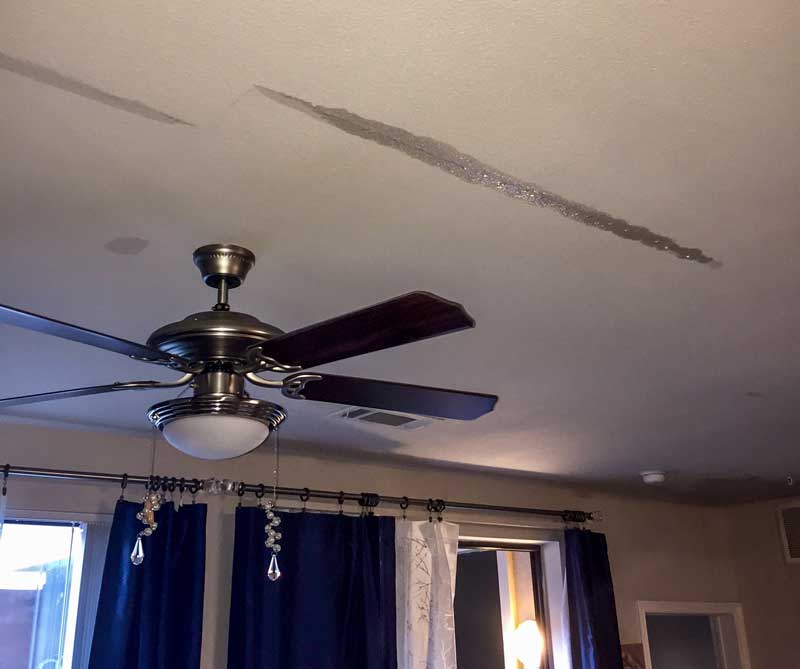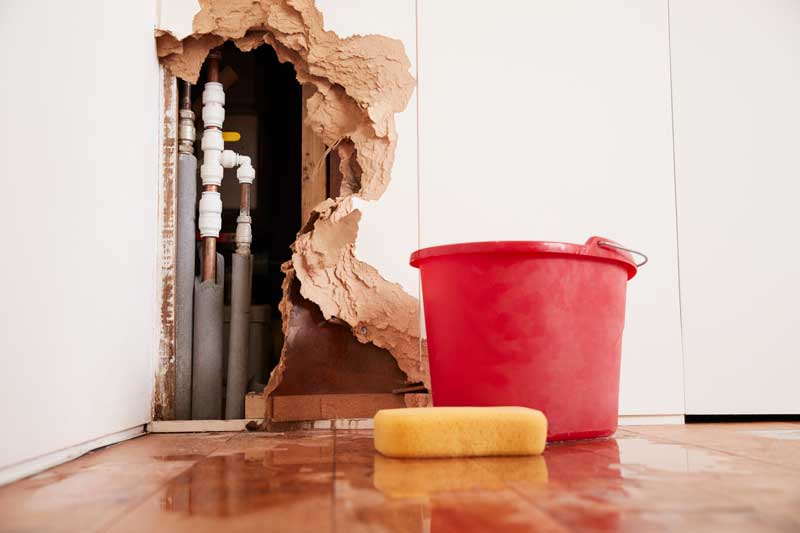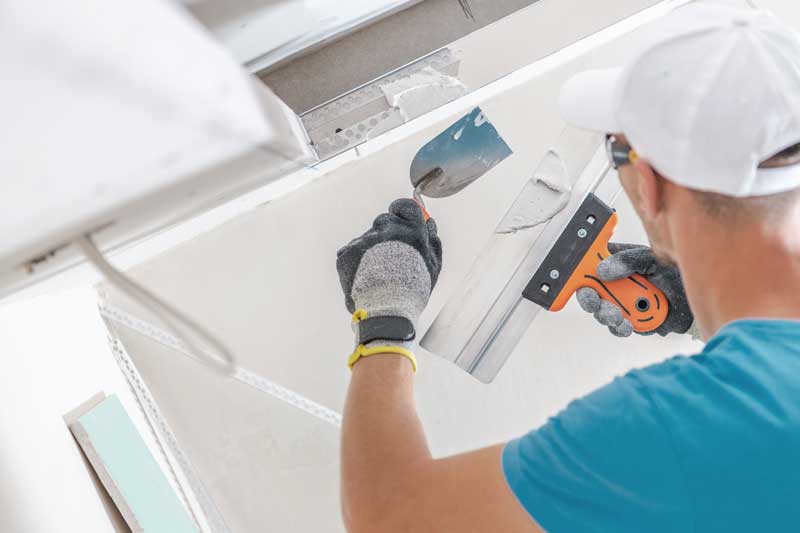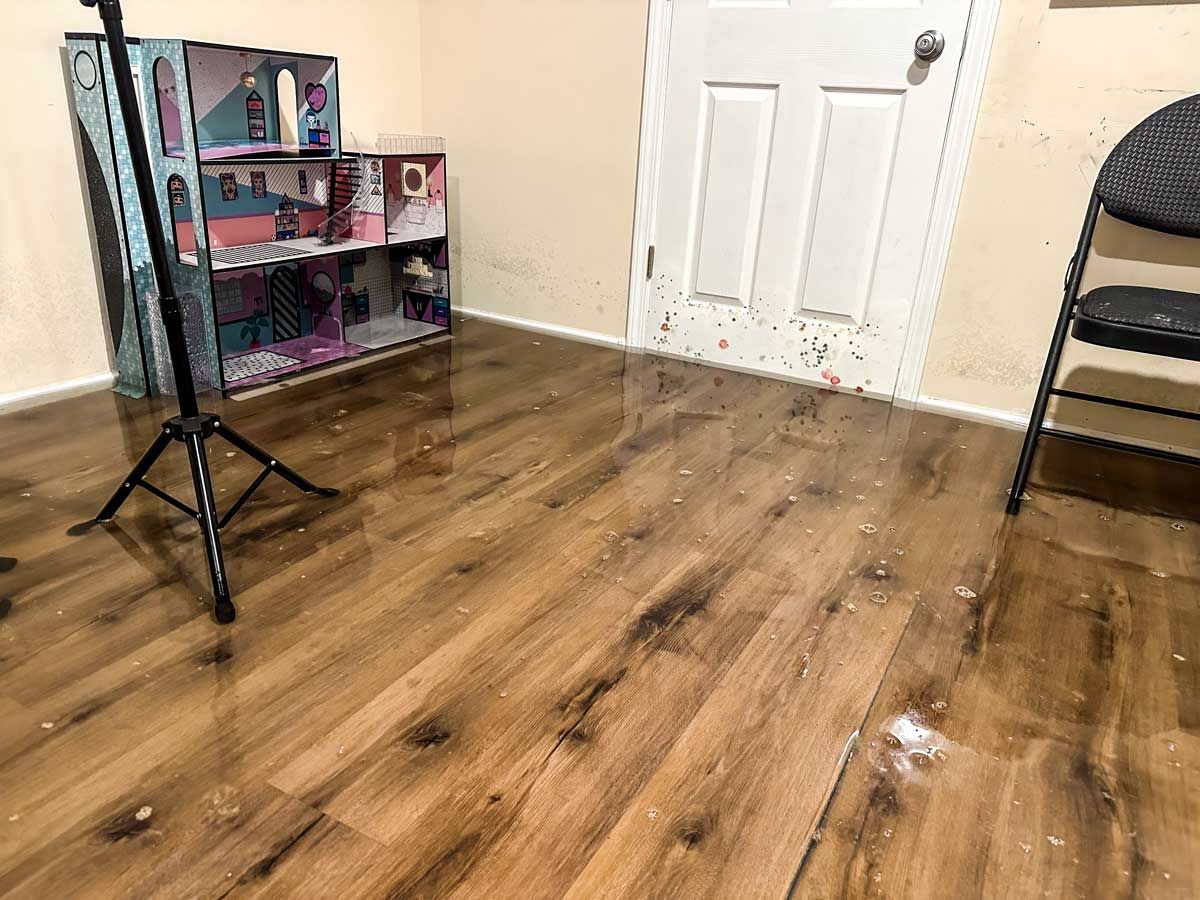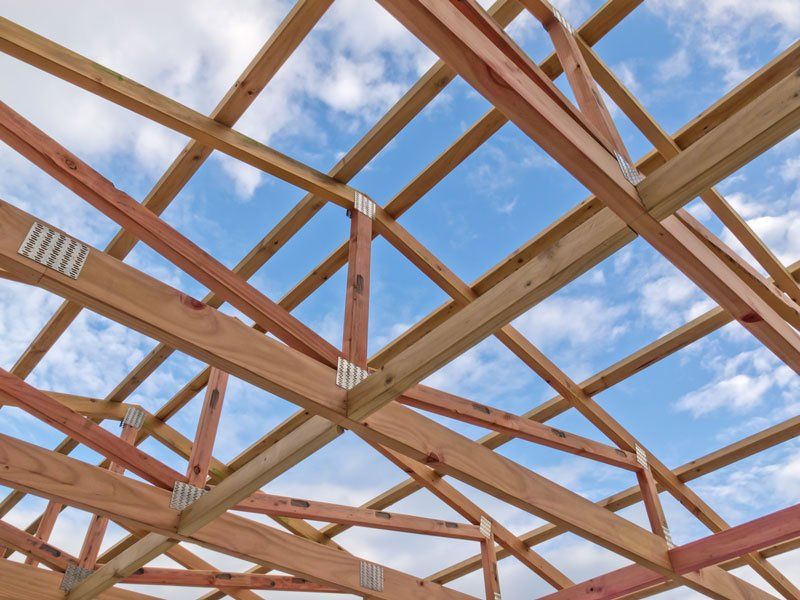Ceiling Water Damage Repair Louisville
Water damage to the ceiling can happen for quite a few reasons. The most common ones being a leaky roof or broken pipes. How to fix water damaged ceiling?
If you have noticed your ceiling bubbling up, starting to show darker spots that in some cases can even be brown, or having bulges show up, you should get to investigating right away. If you delay and ignore these signs, there is a good chance that the damage will grow exponentially very quickly.
The faster you react, the lesser of an impact the damage will have. Ignoring a leak can lead to mold development as well as structural damage. You might be wondering what the right steps to take if this describes your situation are? You came to the right place since we are about to tell you.
Finding the source for water damage
Before you look for a water leak, make sure that there are no electronic devices in the vicinity under the water damaged ceiling. Then, find the water source where the leak is coming from and turn it off if possible.
If it’s the ceiling on the top floor, there might be a hole in your roof or backed-up gutters. Clogged gutters usually cause damage that can be seen by the corner of where the roof connects to the wall.
If the ceiling water damage is on the house’s lower floors, it might be a piping issue. There are a few reasons for piping issues. It could be that you are dealing with a corroded pipe, a frozen pipe that burst, a pipe that wasn’t installed properly and came out of place, or other plumbing related issues.
Finding the source for the water damaged ceiling can get tricky since it is not always directly above the affected spot. There is a high possibility that you’ll need to tear down some plywood to get to the source of the leak. If you do not have experience doing it yourself, now it’s a good time to call an expert water mitigation and restoration company.
Drying and getting to the source
If you have the water source under control, now you can start to take down the ceiling materials that were affected by the water damage. You should lay down a plastic sheet, tarp, or towels that you do not mind getting dirty directly under the damaged ceiling.
Make sure to wear protective eyes glasses since there might be debris flying at your eyes as well as water pouring out. If the ceiling is leaking, there is a lot more water above it, and it will have to come down.
You’ll need to cut out the affected part of the ceiling and replace it with a new one after ensuring that the materials around it are completely dried out. If the area that you will be cutting out is larger than 1 foot by 1 foot, you’ll need to replace the whole piece of plywood. It is best to cut out the ceiling in a square shape to be easier to replace.
It is essential to make sure that the areas surrounding the water damaged ceiling are entirely dried out. Any left moisture can result in you needing a mold remediation service down the line. This can then lead to many other headaches, including health issues, damaging building structure, etc., to name a few.
If, at any point, throughout this process, you feel overwhelmed with the depth of work that needs to be done, contact a water damage restoration company. Knowing exactly how to fix water damaged ceiling requires extensive knowledge in dealing with water-related disasters and quite a bit of skill when it comes to tearing down ceilings, walls and putting them back together.
Replacing damaged materials
Once you have completely dried out the area that was damaged and fixed the source for it, now it’s time to put the ceiling back together. Before you start, take note of the materials that have been initially used for your ceiling. The thickness of the plywood must match.
You should remove any affected paint that is bulging out or bubbled up. Scrappers can be used on this occasion. Once that is done, the time comes to place a new piece of plywood in the old’s place. It would be best if you cut out a broader and longer piece than the one that was damaged. It is better to start with a larger piece and shave off as you go until you get the right fit.
Once you found the right size, use specialized adhesive to place the new piece inside the ceiling. Make sure that the area is well ventilated. Please wait for it to dry out entirely before you prime it and paint it.
How to fix water damaged ceiling – conclusion
It is necessary to react quickly as water damage is considered an emergency. If ignored, water damaged ceiling can become a massive headache through the things that can develop out of it. You should get expert assistance for water damage mitigation and restoration if the work is too rough for you or can not take care of a water affected ceiling yourself.
Orange Restoration is an IICRC certified company with over 14 years of experience servicing Indianapolis, IN, Louisville, KY, New Albany, IN, and surrounding areas. We specialize in water mitigation, water damage restoration, mold remediation, fire and smoke restoration, and many other services. Our main goal is to get your property back to the original condition with the least hassle for you. Give us a call today if you are looking for disaster restoration services!
The post How To Fix Water Damaged Ceiling appeared first on Orange Restoration.


Let’s talk about your project
Fill out your contact details and a message to request a call back. If it is an emergency, please call us instead: 800-308-8422
We will get back to you as soon as possible.
Please try again later.
COMPANY
SERVICES
Contact
CONTACT US
OFFICE:
800-308-8422
EMAIL: INFO@ORANGERESTORATION.COM
ORANGE RESTORATION
1501 Beeler St,
New Albany, IN 47150
© ORANGE RESTORATION 2023

